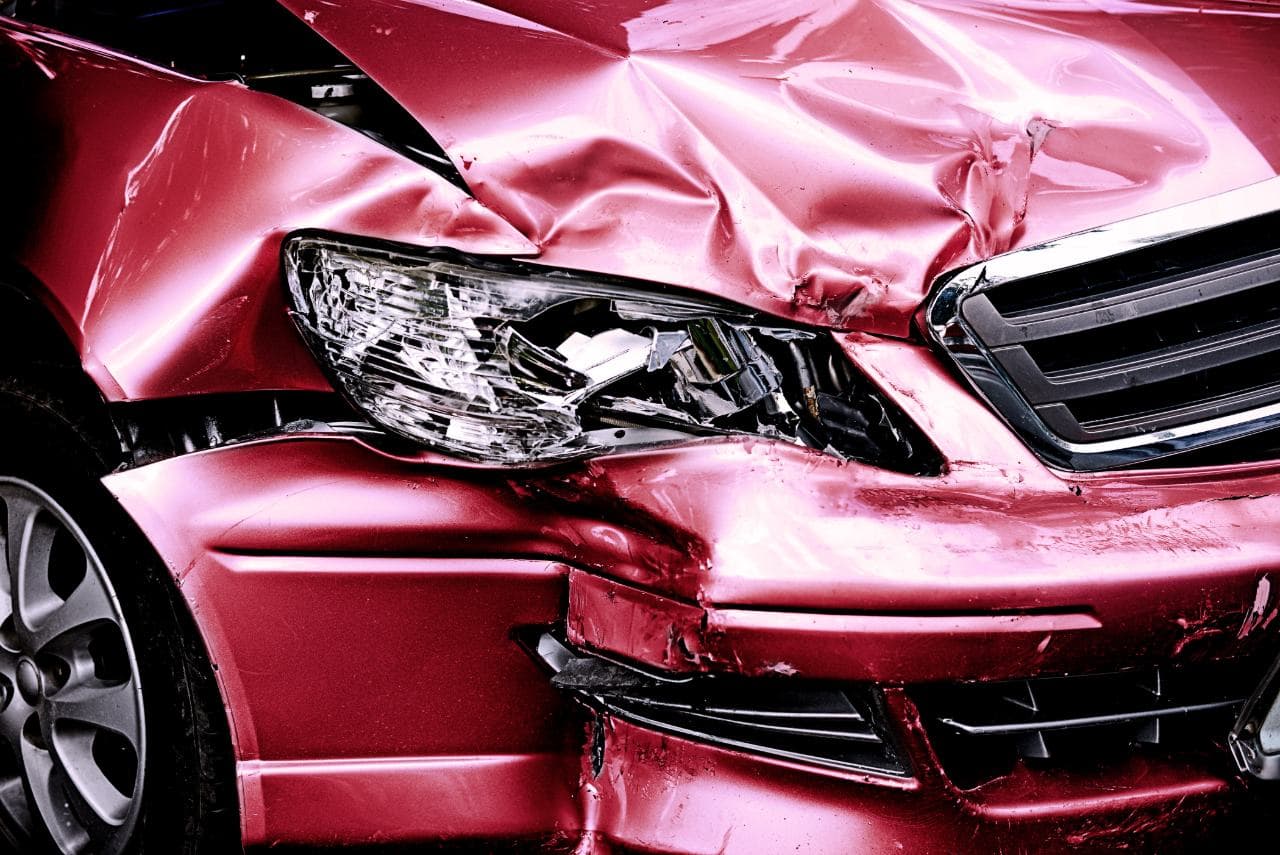Vehicular assault means when a person, using a car, intentionally, knowingly, or recklessly causes someone else to get injured. It is also when a person uses a car to intentionally scare someone with the threat of harm. Vehicular Assault is most commonly charged based on an allegation that a person was driving under the influence of alcohol or drugs and caused an accident that hurt someone else.
Vehicular assault is charged as aggravated vehicular assault because the assault is aggravated (or made worse) by the fact that a dangerous instrument (a vehicle) is used during the assault. Or the assault is aggravated by the fact that the physical injury caused was serious physical injury. Under A.R.S. § 13-1204, there are three primary ways to commit vehicular assault.
1.Any Physical Injury. A conviction for aggravated vehicular assault requires the prosecution to prove that:
2. Serious Physical Injury. You can also be convicted for vehicular assault if the prosecution proves that:
3. Fear of Injury. You can also be convicted for aggravated vehicular assault if the prosecution proves that:
SIDE NOTE: A DUI with accident but no injury would not constitute vehicular assault because while the conduct was reckless and a dangerous instrument was used (car), there was no physical injury. The person, however, would be charged with DUI and likely face harsher punishments due to the accident.
The law surrounding vehicular assault in Arizona can be some of the more complicated law to understand. This is because in order to be convicted and sentenced under Arizona’s vehicular assault statute, a series of legal determinations need to be made by the prosecution, the judge and often a jury. The terminology and law surrounding these findings are outlined below.
This way of committing vehicular assault under this theory is pretty straightforward. It is when use a car to hurt someone with the intent to hurt them or knowing that you will them.
The law defines recklessly to mean that you are aware of and consciously disregard a substantial and unjustifiable risk that conduct will result in physical injury. The risk must be of such nature and degree that disregarding it is a gross deviation from what a reasonable person would do in the situation.
This means that you are aware of but choose to ignore a dangerous risk that your actions will cause physical injury to another person. And a reasonable person in your shoes would not have ignored such a dangerous risk. Vehicular assault involves the same type of reckless behavior that can result in vehicular manslaughter charges when someone dies, rather than gets injured, in the car accident. For example, driving under the influence (DUI), criminal speeding, aggressive driving, drag racing, or texting while driving.
For vehicular assault, this means that, using your car, you intended to scare another person with the fear of immediate physical injury.
SIDE NOTE: There has to be evidence of the victim’s apprehension of fear or that the victim knew of the danger. So, in the example above, if the pedestrian has headphones on and for whatever reason never notices the car speeding toward him and stopping just short of hitting him. Under these circumstances, the driver has not committed an assault. The pedestrian was unaware of the driver’s actions and was not afraid of the driver hitting him.
Physical injury means the impairment of a physical condition. Depending on the prosecutor, you could be charged with vehicular assault even when the injury is minor, such as a cut or a bruise. However, prosecutors tend to charge vehicular assault when the injuries are more significant.
Serious physical injury includes physical injury that creates a reasonable risk of death, or that causes serious and permanent disfigurement, serious impairment of health, or loss or protracted impairment of the function of any bodily organ or limb.
A dangerous instrument is anything that is readily capable of causing death or serious physical injury under the circumstances in which it is used. A car is considered a dangerous instrument when used under circumstances that are readily capable of causing death or serious physical injury.

When there is serious physical injury it is up to the prosecutor to charge the vehicular assault under the law requiring serious physical injury or the law requiring use of a dangerous instrument. You will definitely see the crime charged both ways.
Often, the prosecutor will choose to charge the crime under the law requiring the use of a dangerous instrument. This is because sometimes whether an injury is serious under the law is not as clear cut and needs a lot of expert testimony from the victim’s doctor. Unfortunately, it can often get worse:
Instead, what the prosecutor will often do is charge the crime under the law requiring the use of a dangerous instrument and allege the serious physical injury as an aggravating factor. If a person is found guilty of the vehicular assault, then the prosecution presents evidence that the victim had serious physical injury. If the jury finds that the prosecutor has proven the aggravating factor of serious physical injury, then a defendant can receive a harsher punishment. The prosecutor still has to prove the serious physical injury beyond a reasonable doubt, but by then the prosecution has already gotten a conviction for the vehicular assault.
In Arizona, vehicular assault penalties are serious as the crime is charged as a Class 3 Dangerous Felony. When determining the vehicular assault penalties, the sentencing judge first starts by considers the presumptive term of 7.5 years in prison.
SIDE NOTE: Arizona charges vehicular assault as a dangerous felony. An offense is a dangerous offense if it involved the use of a dangerous instrument. As described above, a car is a dangerous instrument when it is used in way that it is readily capable of causing death or serious physical injury. If the prosecution proves that your car was a dangerous instrument, then you face mandatory prison as a sentence. This means that even if you have never before committed a crime, you cannot be placed on probation and must be sentenced to prison.
If you have no prior criminal record and the prosecution does not charge the crime as a Dangerous Offense (or is unable to prove that the offense was Dangerous), then you could be sentenced to:
In addition to the penalties imposed by the court, if convicted of vehicular assault, you can also expect:
Mandatory reporting of a charge of vehicular assault is common for most professional licenses. A conviction will normally mean suspension or revocation of a professional license.
Because vehicular assault is both a felony and a dangerous offense, those convicted of the crimes will normally face significant issues in instances of background checks. Prohibitions on employment opportunities, renting and mortgaging property and travel are commonplace.
If you are convicted of vehicular assault, then MVD will revoke your driver license for 3 years. A.R.S. §§ 28-3304, 28-3315. After this 3-year revocation period has ended, you must apply to have your driving privileges reinstated. Your driving privileges are not automatically reinstated after the 3 years. You must complete a Revocation Application (also referred to as an Investigation Packet) with MVD and pay a reinstatement fee. Also, you must have fulfilled any other court or MVD conditions, such as payment of fines and restitution and completion of traffic survival school.
Various defenses can apply to your case. What defenses to raise depends on the facts of your specific case and how you were charged. Common defenses to Vehicular Assault include:
The most common defense for all types of cases is to attack the quality and reliability of the evidence used against you.
If the other cause of the injury was unforeseeable and out of the ordinary, then the other cause could be called a superseding intervening event.
Another common defense is to attack the evidence being used to show that you acted recklessly. For example, maybe the police’s accident reconstruction is faulty, or the crime lab did not properly test your blood alcohol concentration. You can also argue that your behavior did not rise to the level of recklessness—that a reasonable person could have done the same thing in your shoes. This was an accident, not a crime.
Depending on your actions, you may also be able to argue that your actions did not transform your car into a dangerous instrument.
For this defense, you argue that the injury does not rise to the level of a serious physical injury as described by law. Most often, you argue that even though the injury was substantial, it was only a temporary injury or an ordinary fracture. This will drop the crime down from a Class 3 Felony to a Class 4 Felony, with less serious penalties.
Any DUI with injury or DUI with great bodily injury could be charged as Vehicular Assault. You can expect that a DUI with great bodily injury is going to be charged as Vehicular Assault. A DUI with great bodily injury will be charged as Aggravated Assault based on either causing serious physical injury or using a car as a dangerous instrument.
On the other hand, whether a DUI with injury is charged as Vehicular Assault depends on the nature of the injury, who the prosecutor is, and what county the prosecutor is in. A DUI with injury will be charged as Aggravated Assault based on using a car as a dangerous instrument.

Vehicular assault is a serious charge that involves a lot of technical issues. The defense attorneys at Feldman & Royle have extensive experience defending clients charged with all manner of vehicular crimes and have successfully defended many vehicle assault cases both in plea negations and at trial. We can help you navigate the complex issues involved in these types of charges and develop the best defense strategy for your case. Call now for a free consultation.

No tags assigned to this post.